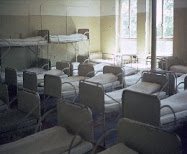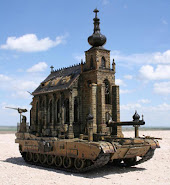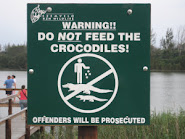Records show that John Paul II could have intervened in abuse crisis - but didn't
Thomas Doyle
25-4-2014
Sitting on a bookshelf in my office is a red leather-bound copy of the Code of Canon Law. This isn't just
any
copy of the church's rulebook. It was signed by Pope John Paul II for
me at the request of my former boss, the late Cardinal Pio Laghi. It is
dated 6-6-1983 in the late pope's own hand. I was definitely a fan in
those days.

On Sunday after John Paul is promoted to sainthood, it will become a
second-class relic. I will not venerate it, nor will I join the cheering
crowds.
The past 30 years have led me to the opinion that his sainthood is a
profound insult to the countless victims of sexual assault by Catholic
clergy the world over. It is an insult to the decent, well-intentioned
men and women who were persecuted by the Congregation for the Doctrine
of the Faith during his reign, and it is an insult to the memory of Pope
John XXIII, who has the misfortune being a canonization classmate.
This soon-to-be relic is a symbol of the shame and the failure of the
book's content, the collection of church rules, and of the pope who
autographed it.
People more eloquent than I have publicly stated the
many reasons why this is so. I won't repeat their words here. However, I
believe it is important to clarify some of the bizarre statements John
Paul's two main cheerleaders have been making.
George Weigel
claimed there was an information gap
between the United States and the Holy See in 2002. This is nonsense.
There was no gap then, and there was no gap in 1984, when the abuse
issue boiled to the surface of public awareness. I was working at the
Vatican embassy in 1984 and have firsthand experience of the
transmission of information to the Vatican.
The papal nuncio, Laghi, then an archbishop, received a letter in the
summer of 1984 from the vicar general of Lafayette, La., telling him
that a couple whose little boy had been violated by Gilbert Gauthe was
suing Gauthe, the bishop, the diocese, the archbishop of New Orleans,
the papal nuncio and the pope. Soon after, the nuncio received the
official complaint. From then on, there was a constant flow of
information from Lafayette to the nuncio and from another diocese that
popped onto center stage for the same reason -- Providence, R.I.
I was the conduit for most of the information and prepared daily
memos for Archbishop Laghi. The usual procedure would have been to
prepare a report for the Holy See, but that didn't happen at this stage.
Laghi was on the phone to various officials in the Vatican, including
the Secretariat of State, which is as good as going directly to the
pope. In our conversations about the problem, and there were many, he
frequently made statements such as, "I have talked to my superiors in
Rome" or "My superiors in Rome" have said such and so.
In late February, I suggested to the archbishop that we ask the Holy
Father to appoint a U.S. bishop to go to the Lafayette diocese as a
special investigator to both see firsthand what was going on and to try
to put some order into what was a rapidly growing chaotic mess. I
suggested the late Bishop A.J. Quinn of Cleveland. Although my
intentions were good, he was a mistake. Before long, it became obvious
that he was part of the problem and not part of the solution.
Laghi agreed with my suggestion and asked me to prepare a report that
would be attached to the request. The purpose of the report was to
explain the situation in Louisiana. I quickly put together a report that
was about 35 pages in length. It was detailed and factual, naming names
and giving dates. It included the history of the cover-up as we knew it
and a fairly graphic description of the harm done to the victims, a
description based on some of the first medical reports I had received.
The nuncio told me that this was an urgent matter and for that
reason, he wanted the report to go directly to the pope and not through
one of the Vatican congregations. The late Cardinal John Krol of
Philadelphia, a close friend of the pope, was leaving for Rome the
following Monday. My orders were to get the report, signed by Laghi, to
Krol by Sunday night. He had spoken with Laghi and had agreed to put it
directly into the pope's hands. The report was sent by courier to
Philadelphia. By Tuesday, it was before the pope, and by Thursday night,
we had received a telex informing us that the pope had duly deputized
Quinn as Laghi had requested.
From then on through the spring of 1985, I continued to prepare memos
for Laghi, who continued to report to his superiors in the Vatican.
There were some written reports sent over, but I don't recall how many.
Among the items sent was
a copy of the now-infamous report
prepared by the late
Fr. Michael Peterson, Attorney Ray Mouton, and me.
This was the same report that the officials of the bishops' conference
said they didn't need because they knew everything that was in it.
Fast forward to June, bypassing the famous Collegeville, Minn.,
meeting at which the bishops spent an entire day in executive session
hearing about clergy sexual abuse but apparently learning nothing given
the long-range outcome. In mid-June, as I recall, the late Cardinal
Silvio Oddi visited the nunciature. At the time, he was prefect of the
Congregation for the Clergy. Oddi reminded me of the cartoon character "
The Little King." He had a cardinalatial ring with a stone as big as a golf ball.
He told Laghi that he wanted to hear about the sex abuse crisis. The
nuncio told me to meet with the cardinal and brief him. I prepared a
"briefing paper." This was June, and a lot had transpired since
February. The nuncio had become aware of many more reports of sexual
abuse by clergy from a number of different dioceses. I prepared my
report and knew enough to be factual and detailed and, in some areas,
graphically explicit. Oddi sat for about two hours while I in essence
read the report, with occasional diversions to add more detail.
Normally very affable, the good cardinal was clearly in a dark mood
when I finished. He asked a number of pointed questions about both the
abusers and the abused and wanted to know why the accused priests were
not subjected to a canonical trial. I will never forget his closing
comments. "I will speak of this to the Holy Father. We will have a
meeting of the prefects of all the dicasteries [Vatican departments],
and we will issue a decree!" Subsequent to his departure, I recall Laghi
assuring me that something would be done because Oddi would report to
the pope. Whatever happened is anyone's guess. There was no decree, and
even if there had been, it would have been useless.

This was in 1985, not 2002. It is hard to believe that this pope, who
was supposed to be one of the smartest men alive at the time, could not
have understood the gravity of significant numbers of priests raping
and violating little children. The excuse that he did nothing because of
his "purity of thought" is as ridiculous as the excuse that he wanted
to preserve the priesthood for which he held such high esteem.
Joaquín Navarro-Valls, John Paul's press officer,
said Friday
that he didn't think the pope or anyone else understood the gravity of
the crisis. Other than the fact that this assertion is also ridiculous, a
number of people in the church did understand the gravity: the mothers
and fathers of the children who were violated and even the general
public, who were clamoring for action even back in the mid-'80s.
Navarro-Valls said after 2002, Pope John Paul immediately began
taking action. Other than making nine recorded public statements, all of
which were sufficiently nuanced to be innocuous, and calling a meeting
of the U.S. cardinals to tell them what everyone already knew, he did
nothing positive.
He did, however, do a few negative things. He was ultimately
responsible for short-circuiting the investigation of
Fr. Marcial Maciel Degollado. He refused to investigate the accusations against Cardinal
Hans Hermann Groër of Vienna. He promoted the careers of some of the
bishops and cardinals who intentionally inflicted horrendous damage on
victims and expended vast amounts of donated money to stonewall the
process of justice, e.g., Cardinals Bernard Law, Roger Mahony and George
Pell, to name but a few. Perhaps the most egregious nonaction was
completely ignoring the pleas of thousands of victims, many of whom
wrote directly to him. Victims and victims' groups bombarded the Vatican
with letters and requested audiences or at least recognition by the
pope, especially at the World Youth Day celebrations. Not only were
their requests ignored, but not one ever even received an
acknowledgement of the receipt of their communication.

The sexual abuse scandal of our era has been the Catholic church's
worst nightmare, and it has been going on for 30 years. The enormity of
it all challenges the English language for words that can accurately
describe it. The spectrum of large numbers of priests, bishops and even
cardinals from around the world sexually violating children, one of the
vilest crimes imaginable, challenges the capacity to grasp the enormity
of such evil. Yet it not only happened, but it was enabled by those who
have professed to follow the Gospel and lead others on the same path.
On Sunday, the institutional church will accord its highest honor to
the one man who, more than any other alive, could have ended the
nightmare and saved countless innocent and vulnerable victims. But he
did not. It was not a question of he could not
, but he would not
.
The red book on my shelf may be a relic, but it is also a reminder of
the very dark side of the institutional church, a side John Paul helped
reveal.
[Thomas P. Doyle is a priest, canon lawyer, addictions therapist and
longtime supporter of justice and compassion for clergy sex abuse
victims.]













 He says the commission will open old wounds.
He says the commission will open old wounds.
 On Sunday after John Paul is promoted to sainthood, it will become a
second-class relic. I will not venerate it, nor will I join the cheering
crowds.
On Sunday after John Paul is promoted to sainthood, it will become a
second-class relic. I will not venerate it, nor will I join the cheering
crowds.
 This was in 1985, not 2002. It is hard to believe that this pope, who
was supposed to be one of the smartest men alive at the time, could not
have understood the gravity of significant numbers of priests raping
and violating little children. The excuse that he did nothing because of
his "purity of thought" is as ridiculous as the excuse that he wanted
to preserve the priesthood for which he held such high esteem.
This was in 1985, not 2002. It is hard to believe that this pope, who
was supposed to be one of the smartest men alive at the time, could not
have understood the gravity of significant numbers of priests raping
and violating little children. The excuse that he did nothing because of
his "purity of thought" is as ridiculous as the excuse that he wanted
to preserve the priesthood for which he held such high esteem.













